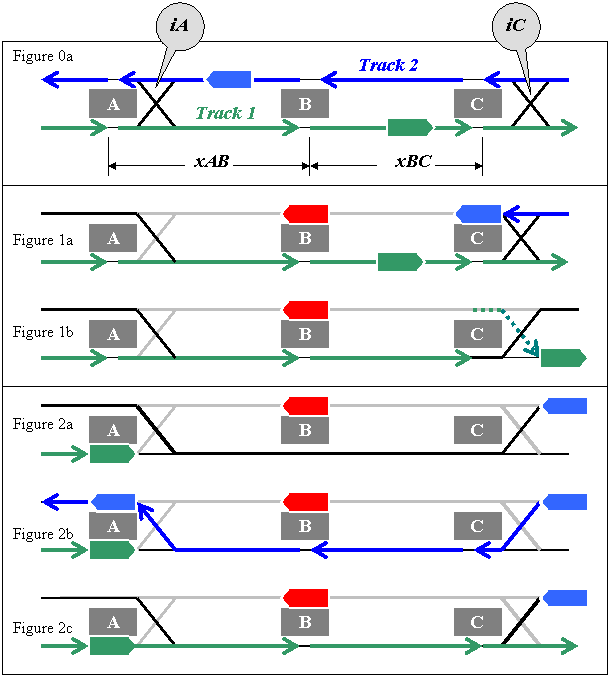|
|
 Every
now and then a commuter train with hundreds of passengers on board gets
delayed. Most often that occurs in a station. A medical emergency
may hold up departure for a few minutes, a security alert about the same
or (shudder) longer. If the delay exceeds the headway
(tH), other trains, each carrying hundreds of passengers,
will be adversely affected. Every
now and then a commuter train with hundreds of passengers on board gets
delayed. Most often that occurs in a station. A medical emergency
may hold up departure for a few minutes, a security alert about the same
or (shudder) longer. If the delay exceeds the headway
(tH), other trains, each carrying hundreds of passengers,
will be adversely affected.
Sometimes one door-leaf won't close. For safety's sake, all the passengers must give up their seats, grab their laptops, and get off the train, thence to stand around waiting on a crowded platform for the next train, which will be due in tH. Meanwhile, the empty, otherwise healthy 'consist' goes rattling on down the track toward the maintenance shop. Propulsion or brake failures are rare, but the time to restore service may result in giving the train a "bad-order." In worst-case bad-orders, the train cannot be moved. During commuting rush-hours, that necessitates what is called, without affection, "Single Tracking."
In Figures 1 and 2, a bad-order train is shown stopped at Station B on Platform 2, in effect taking all of Track 2 out of service between Stations A and C. In Figure 1a, we see an EB train on Track 1 that is not immediately affected by the bad-order train on Track 2. A WB train at Station C on Platform 2 will not be able to proceed on Track 2 and must therefore off-load all of its WB passengers, including those who may have just boarded. At some point, of course, the WB train at Station C should be turned back, perhaps to become an EB train, departing from Platform 2 and crossing over to Track 1 via iC as depicted in Figure 1b. 
Figure 2c illustrates how the EB train at Station A will be able to occupy Track 1 immediately after the WB train clears iA. By inspection, sophisticated solvers will estimate that during Single Tracking the single-tracking headway can be estimated as the round-trip time between interlockings, thus tHSINGLE-TRACKING = 2(tAB + tBC). Test Case Let: tHDOUBLE-TRACKING = 6 minutes, tAB = 7 minutes, tBC = 8 minutes. That means tHSINGLE-TRACKING = 2(7 + 8) = 30 minutes. A passenger showing up randomly at any of the three stations
A,
B, C expecting to wait an average of tHDOUBLE-TRACKING
/
2
= 3 minutes for the next train, will be disappointed at having to
wait around tHSINGLE-TRACKING
/
2 = 15 minutes.
|
